The family of hyacinth perennials is famous for beauty and diversity. A real pearl of the genus is considered to be Evomis (translated from Greek - "beautiful"). Currently there are the names of the "Pineapple Lilia" or "Khokholk Lilia". The plant conquers gardeners by long spectacular flowering and attractive appearance after it. Wherever you planted Pineapple Lillia, it will attract the attention of others from anywhere in the garden. And if you put an energone in the container, the plant will turn into a mobile designer element. How to grow pineapple lily and care for her, read in the article.
Pineapple lily: what a plant looks like
The natural growing medium of this bulbian herbal culture is sunny southern lands of Africa. Evomis, or a pineapple lily grows very quickly, and depending on the species reaches a height from 25 to 100 cm. Snesh-white, pastel-pink, purple and green flowers are abundantly decorated with an exotic plant throughout the summer.
The massive egg-shaped pineapple lily bulb has a branched system of strong roots. A large number of glossy leaf of remover or linear shape form a dense lush rosy at the base. The edges of the leaflets are wavy, and their lower part is often decorated with brown stains.
A high pineapple lily flowers looks like a large dense arrow, crowned with small leaves collected in a bundle. Numerous flowers, white, light green with brownish or punching, are combined with a close extended (up to 25 - 30 cm) brush in the form of a cylinder. At first glance, it is noticeable how strongly the original inflorescence of Evomisis is reminiscent of pineapple: the flowers of the lily shape are boring a lush "ball" on the flower, which grows off the bike sheet socket.
The perianth is 6 separated from the base of white shares, after completing the flowering, they do not fall. 6 thin filamentoid stamens grow up with a perianth. There are 3 ribs in the rounded wound. The fruit is presented by a triangular box, which is subsequently revealed along the line lines. Egg-shaped seeds are painted in a dark brown or black color.
A bright exotic plant is grown in containers or in open garden soil.
Pineapple Lily: Plants Varieties
Of the 14 types of Evomisis, gardeners are grown and diverge only some of them:
- crested pineapple lily. During flowering, the plant decorate greenish-white, light beige, punz and pink flowers. The floweros grows to a height of up to 1 m. The surface of the leaves is darkened with dark purple clips. Culture comes in open ground only in the southern regions;
- pineapple Lily Bicolor. It takes extraordinary popularity in flower water. The name of the species is dictated by the color character: the main color of the flowers is light green, but the edge of petals, stamens and burgundy marking. The inner side of foliage is covered with brown spots. The height of the flower arrow does not exceed 0.6 m. Evomis bicolor flowers from the second half of summer;
- picky pineapple lily. The average culture (from 0.3 to 0.6 m), the highlight of which are brown-red spots on the flower arrow and the bottom of the leaves. In a very lush brush, plants can be counted up to 100 pieces of flowers;
- wavy pineapple lily. A neat squat plant up to 45 cm high, which decorate long leaves with a wavy edge. A characteristic cracked pattern on the foliage is absent. Tightly assembled brush consists of about 50 flowers whose bracts are also wavy;
- autumn pineapple lily. Low (up to 30 cm high) Multi-year culture with a rather large bulb (8 - 10 cm in diameter). Pineapple lily flowers of this species white or cream. It blooms later the rest of the "relatives" and perfectly transfers short-term freezing.
In the photo - blooming pineapple Lilia Bicolor:
Pineapple lily: landing and care
The plant will feel very comfortable if you consider several nuances before landing.
Landing site and soil preparation for pineapple lily
Despite exotic origin, the pineapple lily is completely unpretentious in care. Choose for a permanent place of growing an open area available to the solar rays, but protected from wind gusts in bad weather. Evomis prefers light soil and good drainage in the form of gravel, pebbles, large brick crumbs or stone wreckage. Before planting a pineapple lily in the ground bring river sand. The light-affilome plant will not tolerate the stagnation of water, which can destroy it. Exotic culture will rather take the drought, rather than contact with her thaws or groundwater.
The bulbous cultivation of the pineapple lily begins with the pretreatment of the planting instance of a fungicidal agent (a copper sulphate is suitable, Maxim, Fundazol) to prevent the development of fungal infection.
Watering and fertilizer of pineapple lily
Pineapple lily is rare enough, only as needed. An exception can only be done during its active growth: in this situation, regular and abundant irrigated plant will be very willing to. After each irrigation, the land must certainly braid, and then mulch so that the moisture is less evaporated. The signal that the water energous is no longer needed, serves the yellowing of the leaves of the plant.
Falker must be regular. Making an integrated mineral composition every 2 weeks will provide pineapple lily fluffy bloom. Fertilizers are bred by water. But feeding on a nitrogen-based plant is not at all suitable.
Pineapple Lily Storage Conditions
The thermal lobility is laid in the pineapple lily at the genetic level, so wintering on the street will destroy the plant. When Evomisa foliage pleases and outstand, the bulbs are removed from the ground, subjected to compulsory disinfection in a liquid fungicide or a solution of potassium mangartaged, and then carefully dried. The bulbs prepared for wintering are put into a dense paper buckthor or a canvas bag and leave in the cellar or refrigerator.
Pineapple lily: how to build culture
Get a new plant instance can be three ways
Seed method of breeding pineapple lily
Seeds are bought in specialized points of sale or assemble at the beginning of autumn. Experienced gardeners do this: to not harm the parent plant, they do not wait for the seeds, and cut the flowering arrow. It is put in water and watch the box. As soon as it gets up, it is revealed and collect seeds. Then the planting material is evyed for seedlings.
In a container with a nutrient substrate consisting of sheet, turf, humor, peat and sand in equal parts, the seeds are imprisoned immediately after collecting. With the arrival of heat, when there is no track from frosts, the seedlings are transferred to the garden, at a permanent place. Ananas lily grown in this way will bloom only 3 years after landing. The signs inherent in the variety are not preserved: the color and foliage of the new plant can radically differ from the maternal instance. In countries with a warm climate, where there is no sharp temperature fluctuations, the seeds immediately plant in open ground. Then the pineapple lily will delight gardener with plentiful bloom after a year.
The seed breeding of the pineapple lily is rarely practiced, since the results can not be called positive: most of the seeds quickly loses its germination and does not germinate.
Reproduction of pineapple lily by drawing
Also, the flower enthusiast, most likely, will want to try to propagate the evomis with the help of a leaf cutter. At the base of the foliage assembled, it is necessary to cut one sheet and divide it into parts of 4 to 6 cm in length. These cuttings are planted on a depth of about 2 cm in a loose nutrient substrate consisting of pearlit and sand. Then the landing specimens are moisturized, hide under the film to create an atmosphere of high humidity, or put in greenhouse. From time to time, the protective coating is cleaned to ventilate the cuttings. Little bulbs of future pineapple lilies will appear at the base of the cutter approximately 2-2.5 months. As soon as it happens, the cuttings are seated in separate cups.
Reproduction of pineapple lily with subsidiary bulbs
You can buy bulbs of the pineapple lily or, if there is patience, wait, when the bulb of the old plant gives the "kids." Remember that a healthy bulb is elastic, with tightly adjacent scales and dry don. It is also deprived of plots affected by Gnill. During the recreation period, Evomisis Lukovka is separated and transplanted into the nutrient soil, having previously treated it with a special disinfectant and wrapped with warm water. The place of separation on the mother's bulb is sprinkled by powder of charcoal.
A young bulb is immersed in the landing puddle almost completely - only a small top should remain above the surface of the earth. After a week, a healthy bulb will give the first sprout, after which the fast-growing pineapple lily will begin rapidly increase in size. Several bulbs are cleared with a gap of 40 cm. Young energular watered slightly warm water.
The method of breeding a pineapple lily "kids" retains all characteristic signs of varieties.
Pineapple lily: how to decorate the plant
Pineapple Lily is worth just because its luxurious flowering will become a business card of even the most modest nuclear area. Culture is often used as a soliter composition. Green lawn or small elevation only emphasize the unusual form and clear structural structure of the plant.
In the rocky garden, the pineapple lily always plays the role of the first violin and sets the mood of the whole composition. Thanks to a slender overseas beauty, stones look more majestic and picturesque. The beauty of its glossy foliage without problems is combined with any plants.
Best neighbors for Evomisis - Gerbera, coniferous and soil gardening homoors. In the framework of the flowerbeds, Pineapple Lilia looks great next to Lobelia, Alissum and Geikhera.
Unfortunately, the exotic plant is found today in flower beds quite rarely.
Pineapple Lily: What is sick and who is afraid
- Most often, Evomis is worried about the rotting of the bulbs. With such a problem, the gardener will begin sooner or later due to improper storage or watering of the plant.
- The main enemies for the pineapple lily are the wave, torment Cherver, whitefly and a web tick. Pests are estimated using insecticides and acaricides.
- If the leaves are yellowing ahead of time, covered with brown and mold spots, it speaks of the development of the disease of fungal origin. Perhaps the reason was the wrong care and watering over the measure. In this situation, pull out the plant from the ground and carefully inspect the bulb and the roots. If you find minor areas of damage, cut them, treat the cuts by a fungicidal agent and transform Lily to a new land.
- When Evomis is lacking natural lighting and does not suit too low ambient temperature, the plant blooms very reluctantly or does not bloom at all.

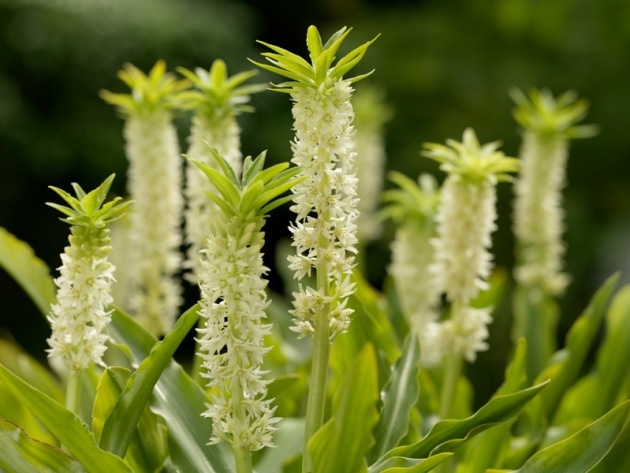
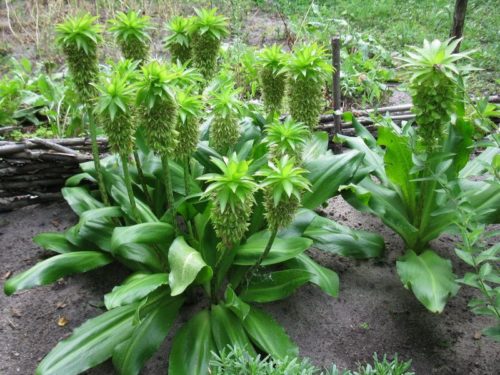
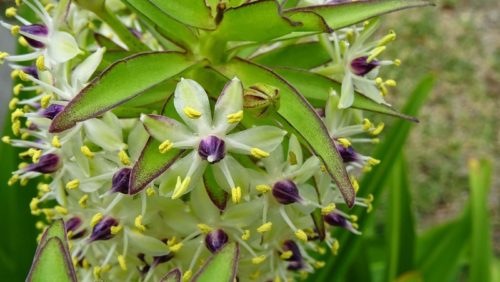
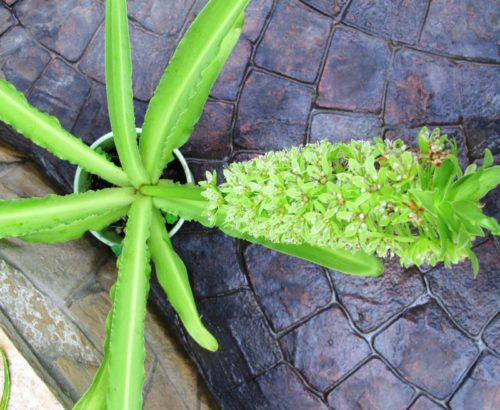
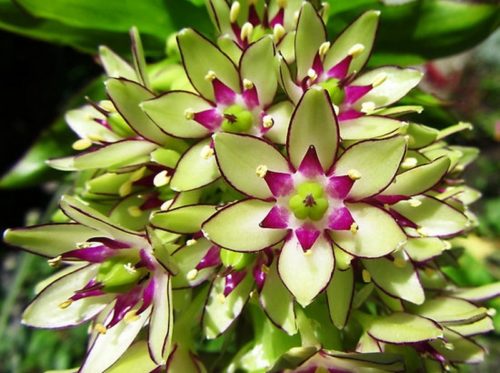
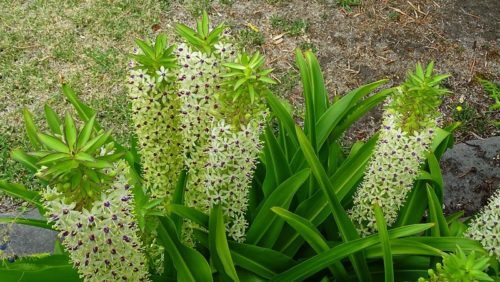
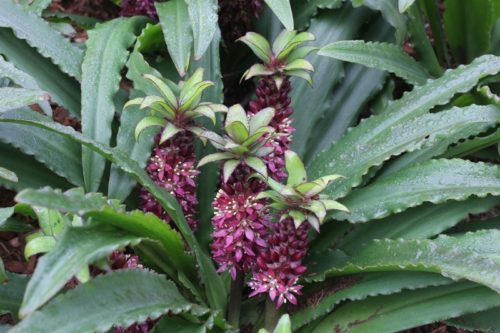
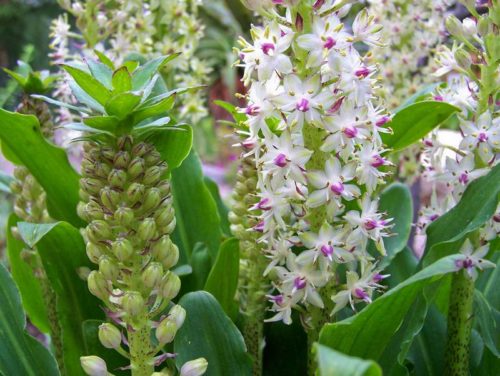
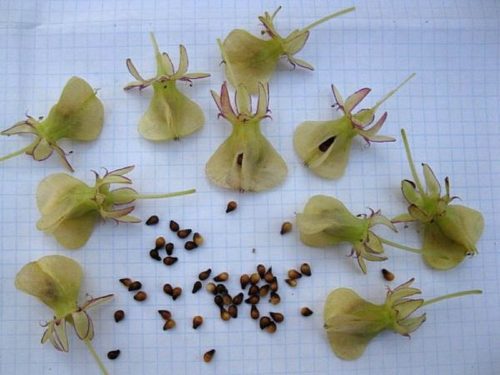
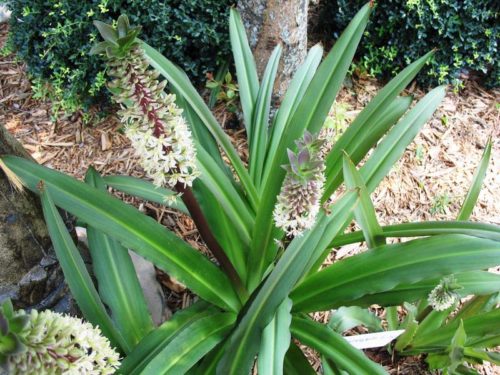
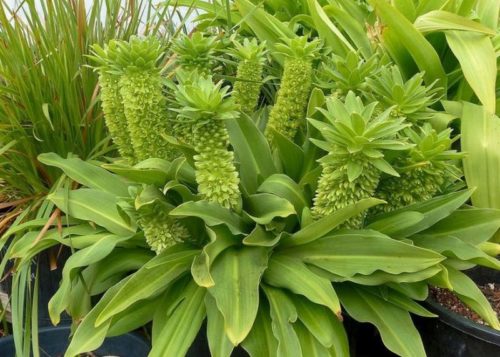













 Start a discussion ...
Start a discussion ...